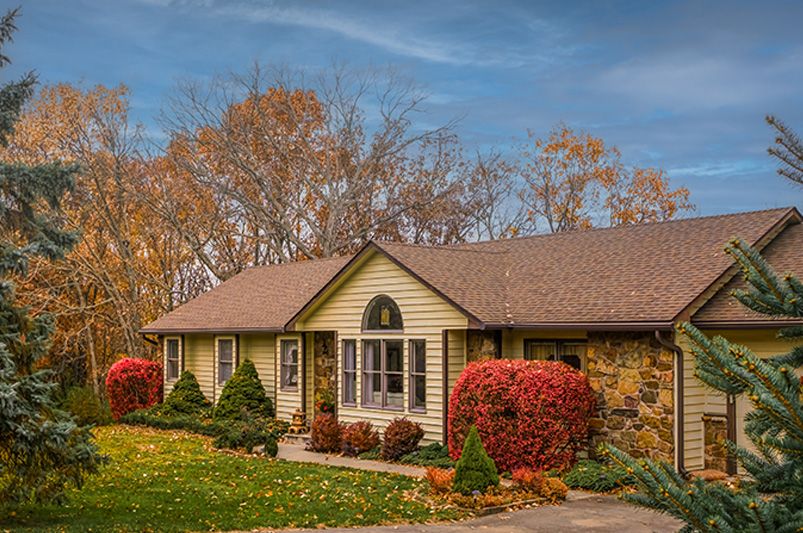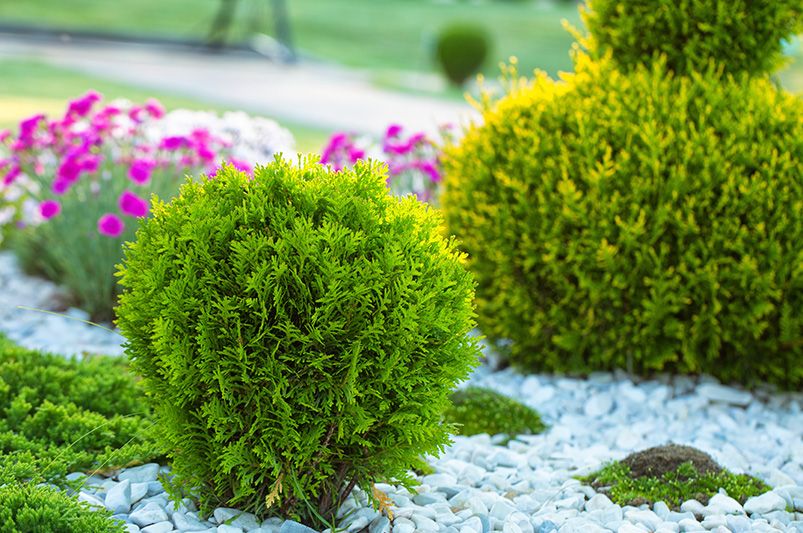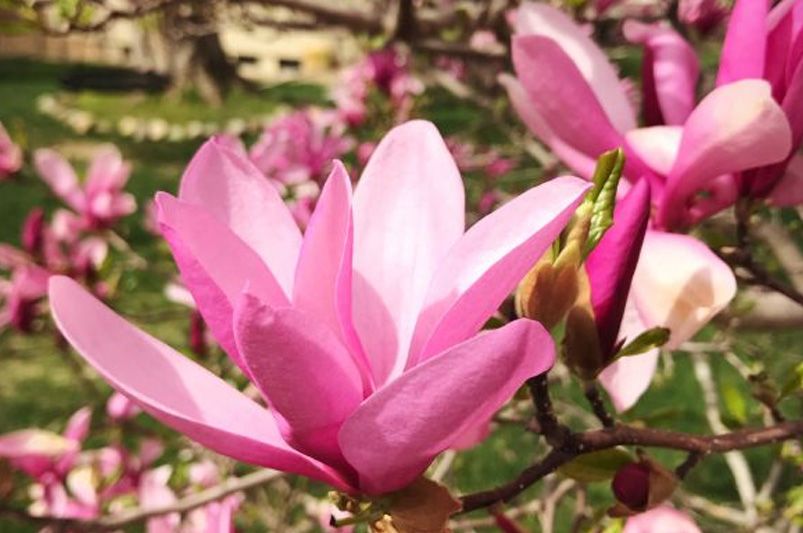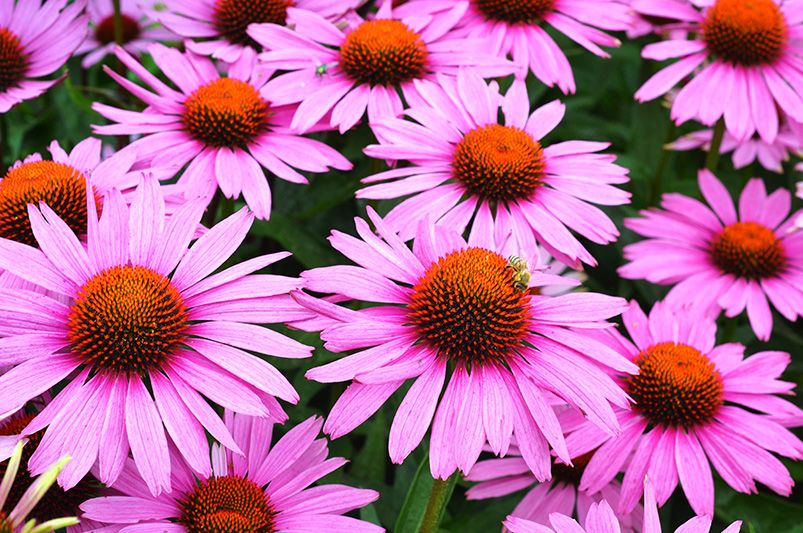
Year-Round Color: A Seasonal Garden Design Guide for Continuous Bloom
Published: 15/09/2025 | Updated: 29/10/2025
Imagine walking into your garden in January and seeing bright berries against frosty branches—or stepping outside in July to a wave of sunflowers and roses. With thoughtful seasonal garden design, you can enjoy a landscape that bursts with color in every season.


Many homeowners struggle with gardens that look beautiful for a few weeks but turn dull the rest of the year. The secret? Strategic planning. By choosing the right plants, layering them effectively, and timing blooms through succession planting strategies, you can create a vibrant, four-season garden that feels alive no matter the month.
This guide will walk you through everything you need: plant selection, plant layering techniques, succession planting strategies, and ideas for winter garden interest.
The Problem: Bare Spots and Seasonal Gaps
Most gardens fall short of their potential because of:
-
Seasonal gaps – no plants bridging the bloom between spring and summer, or fall and winter.
-
Ignoring evergreens – overlooking year-round foliage that adds structure and color even in the snow.
-
Poor plant layering – placing plants without considering height, texture, and timing, leading to flat, uneven visuals.
The Solution: A Four-Season Garden Plan
1. Strategic Plant Selection
Plan for a bloom in every season. Here’s a framework:
-
Spring: Kick off with tulips, daffodils, magnolia, and lilacs.
-
Summer: Layer in roses, coneflowers, hydrangea, daylilies, and zinnias.
-
Fall: Asters, chrysanthemums, ornamental grasses, and sedum extend the show.
-
Winter: Go beyond evergreens—include witch hazel, winterberry, hellebores, and decorative bark trees like paperbark maple.
Pro Tip: Mix perennials (long-term anchors), annuals (color bursts), and bulbs (timed surprises).

2. Garden Layout & Plant Layering Techniques
A visually dynamic garden depends on smart layering:
-
Tall layer (backdrop): Ornamental trees, tall shrubs.
-
Medium layer: Flowering shrubs, midsize perennials.
-
Front layer: Groundcovers, low bloomers, edging plants.
This staggered approach creates depth, maintains color continuity, and prevents bare spots. Group plants with similar sun and water needs to ensure long-term health.
3. Succession Planting Strategies
Succession planting means timing your garden so one set of plants fades just as another blooms. For example:
-
Pair tulips (spring) with daylilies (summer) in the same bed.
-
Follow summer zinnias with fall asters.
-
Plant bulbs beneath shrubs so early color emerges before foliage fills in.
This approach creates seamless transitions, keeps the garden lively, and maximizes biodiversity.

4. Winter Garden Interest
Winter doesn’t have to mean gray landscapes. Add beauty through:
-
Evergreens (boxwood, holly, spruce) for structure
-
Winter-blooming plants like witch hazel and hellebores
-
Colorful bark and stems (red-twig dogwood, paperbark maple)
-
Berries (winterberry, cotoneaster) that feed birds while adding pops of red
A thoughtful winter garden interest plan keeps your outdoor space visually appealing when everything else is dormant.
5. Design for Transitions
Think of your garden as a year-long story. Use color palettes that evolve naturally:
-
Pastel pinks and purples in spring → bold reds and oranges in summer → rich golds in fall → whites, silvers, and reds in winter.
These transitions create harmony instead of abrupt changes.
Results: What Year-Round Color Looks Like
Picture this: early spring tulips emerge alongside fresh daffodils. By June, roses and coneflowers take center stage, followed by vibrant fall asters. Come December, red berries gleam against evergreen foliage while witch hazel blooms.
The result is a living landscape that never goes dormant visually—each season flowing gracefully into the next.

Lessons Learned for a Thriving Four-Season Garden
-
Prioritize native plants—they adapt well to local climates and require less maintenance.
-
Mix evergreen structure with seasonal bloomers for continuous interest.
-
Plan your planting calendar in advance, considering bloom times and transitions.
-
Refresh your garden design every few years to incorporate new varieties.
Year-Round Garden Planning Checklist (Downloadable PDF at End)
-
Map out bloom times for your region
-
Incorporate evergreen structure
-
Use succession planting strategies
-
Layer plants by height and texture
-
Add winter garden interest with berries, bark, and cold-season bloomers

FAQs
Q1: What is succession planting in gardening?
A1: Succession planting is the practice of timing plantings so new flowers or vegetables are ready to bloom as older ones fade, ensuring continuous growth and color.
Q2: How do I keep my garden colorful in the winter?
A2: Incorporate evergreens, plants with colorful bark, winter-blooming shrubs like witch hazel, and berries such as holly or winterberry.
Q3: What are plant layering techniques?
A3: Plant layering arranges plants by height—tall plants in the back, medium in the middle, and low-growers in front—for depth, flow, and continuous visual interest.
Q4: What’s the best way to design a year-round garden?
A4: Focus on succession planting strategies, strategic plant selection for each season, and layering plants for texture and color flow.
Q5: Can I achieve year-round color in any U.S. climate?
A5: Yes! By choosing region-appropriate plants and combining perennials, annuals, bulbs, and evergreens, you can create a colorful garden in any U.S. climate.

Ready to keep your garden vibrant all year long?
Don’t just dream about a four-season landscape—make it happen! Download our Year-Round Garden Planning Checklist for step-by-step reminders on what to plant, when to plant it, and how to design for continuous color.
How ShrubHub Can Help
At ShrubHub, we specialize in turning seasonal challenges into stunning landscapes that thrive year-round. Our expert designers create custom seasonal garden designs, recommend the right plants for your climate, and ensure your outdoor space delivers color in every season.
Ready for a four-season garden makeover?
Get your personalized garden design from ShrubHub today!


